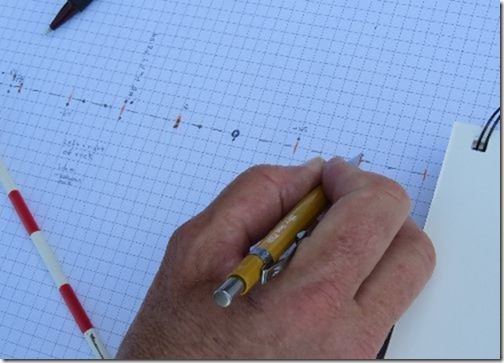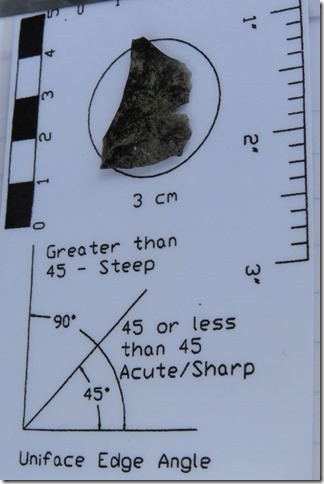Stewardship
Stewardship is one of the ASCO programs our member volunteers can participate in for an on-site experience. Central Oregon has many archaeological and historical sites located throughout the region. These sites are in danger of damage by humans and by nature. ASCO partners with the U.S. Forest Service, Bureau of Land Management, and the Bureau of Reclamation to help protect and preserve these sites. Our stewards monitor sites in a 5-county area: Deschutes, Lake, Crook, Jefferson, and Klamath.
To become a steward ASCO volunteers must complete a training session to learn about the Federal, State and Local laws regarding archeological sites. The training is held by an archaeologist at one of our archeological sites for a hands-on experience. Stewards learn about their duties and the important safety factors of stewardship. Stewards are assigned to a site where they meet with an agency archaeologist for an onsite orientation to learn about the site, what they need to monitor and how often. After each site visit the steward reports any changes or problems to the archaeologist and to the ASCO Stewardship Coordinator.
Working with our agency partners, ASCO stewards perform a vital role in safeguarding Central Oregon’s vulnerable cultural heritage. Imagine a future without a connection to the past. That is what our ASCO stewards do, they help keep that connection alive in Central Oregon.
Do you want to be a steward? If you are interested in becoming a steward, signing up for the training, or learning more about stewardship, please contact the ASCO Stewardship Coordinator at ASCOinfomail@gmail.com.
The following is an article
written by one of our own members
which captures the spirit behind Rock Art preservation!
Over the past 8 years I have been photographing Native American rock art throughout Oregon as a hobby with a vague idea of somehow trying to preserve it. When I gaze upon these ancient works of art, I feel a pull to the past history of Oregon and North America. Some "experts" say they know what they mean; some Native American tribal elders say they have no idea what most of the drawings mean, but they are their people’s history and therefore sacred to them. Other tribal elders are able to give us a window into the past based on what they have been told by their grandparents and great grandparents. Some of the rock art is only 300-500 years old, but even that is older than the founding of the country we call the United States of America. Recently I have had the privilege of viewing significant sites 300 – 7,000-plus years old. The antiquity gives me pause. I reflect on the artist, so long ago, putting down his or her vision on the rock surface. When I view them in good condition, my heart expands with happiness to be able to connect with the ancient ones. Art always speaks differently to different people, but to have such an ancient art still here through the ages to speak to those presently living is an incomparable treasure. When I come upon vandalism and destruction of the art work, my heart crumples, and sadness takes over at the ignorance, selfishness and greed of the vandal. I feel it is important to protect these sites as our legacy from those who lived here before us, speaking to us as much as our hearts and minds are open to let it. I recently visited a site of rock art on the Columbia River where vandalism got to the point where the government had to lock up the site to protect the priceless art from chainsaws, paint, bullets, and chisels. How sad! Now the public must make an appointment to have a ranger guide them in. Do we have to lock up all the sites to protect them from our own people? Will we only have photographs left of the art for future generations?
Written by Mary Webster
One summer, ASCO volunteers helped record a site east of Bend for the BLM. It was a beautiful day and everything seemed to go well. We gathered at the site and listened to the lead archeologist explain the procedures we would be following.

A few of us ran a line from one end of the site to the other and used flags to mark where altitude measurements would be taken.

We also did drawings and chartings, and used a ladder in a couple spots.


We used blue tape to mark the panels.
Then we photographed the panels with the locus number and panel number for easy identification later.

A Scale Card was used to record the many pieces of obsidian and chert scattered around the area.

We had lunch under the shade of the rim rock.

We also witnessed abundant wildlife and had some friendly Butterflies give us a "tickle".
A Melissa Blue (ID by Jim/Sue Anderson - thanks!) seemed to like Stephanie's company.
A Wood Nymph liked to land around Mary.
Maybe they stayed near us to hide from all the Swallows!

What a great day!
- Mary Webster & Stephanie Marks


Other Resources:
Click here to view the National Park Service (NPS) Archaeology Laws & Regulations
Click here to view the Oregon State Archaeology Laws & Regulations
Click here to view the Society for American Archaeology (SAA) Laws & Ethics
Click here to view the Oregon State Historic Preservation Office (SHPO) Permit Requirements

